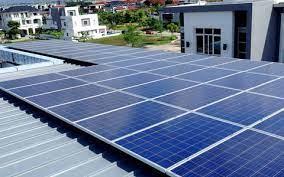Sarah, a young architect, stands atop her newly designed eco-friendly home, basking in the glow of a sunrise. She's determined to power her sustainable haven with solar energy, but as she sifts through proposals from solar installers, she’s hit with a wave of confusion. Some boast panels with stellar efficiency ratings, promising to squeeze every drop of energy from limited space, while others highlight high-wattage panels that churn out raw power. Sarah’s journey mirrors a common challenge for homeowners: understanding Solar Panel Efficiency vs Wattage. This critical comparison shapes the performance and cost of any solar system. Let’s follow Sarah’s quest to demystify this topic and empower your own solar energy decisions.
What is Solar Panel Efficiency?
Solar panel efficiency measures how well a panel converts sunlight into usable electricity, expressed as a percentage. A higher percentage means more sunlight is transformed into power, with the rest lost to heat or reflection.
Measuring Efficiency
Efficiency is tested under Standard Test Conditions (STC): 1,000 watts per square meter of sunlight, 25°C temperature, and an air mass of 1.5. For example, a 22% efficient panel converts 220 watts of every 1,000 watts of sunlight into electricity. Real-world factors like shading, dust, or extreme temperatures can reduce this output, making efficiency a key consideration for maximizing energy in limited spaces.
Types of Panels and Efficiency Levels
Solar panels vary in efficiency based on their technology. Monocrystalline panels, crafted from a single crystal, typically offer 18-24% efficiency, ideal for compact rooftops. Polycrystalline panels, made from multiple crystals, range from 13-16%, balancing cost and performance. Thin-film panels, lightweight and flexible, deliver 7-13% efficiency, better suited for large-scale or unconventional installations. Advances in technology are pushing efficiencies higher, with experimental panels reaching new heights in labs.
Understanding Solar Panel Wattage
Wattage, or power rating, indicates a panel’s maximum output under ideal conditions, measured in watts (W). A typical residential panel might produce 300-450W, defining its capacity to generate electricity when sunlight is optimal.
Factors Influencing Wattage
Wattage depends on panel size, material, and efficiency. Larger panels or those with higher efficiency naturally produce more watts. However, wattage alone doesn’t tell the full story—two panels with the same wattage can perform differently if their efficiencies vary, especially in constrained spaces.
Wattage in System Design
When designing a solar system, wattage determines how many panels you need to meet energy demands. For instance, a home requiring 6,000W might use 15 400W panels or 20 300W panels. The choice hinges on space, budget, and efficiency considerations.
Solar Panel Efficiency vs Wattage: Key Differences
The distinction between Solar Panel Efficiency vs Wattage lies in their roles. Efficiency reflects how effectively a panel uses sunlight, critical for small rooftops or high-energy needs. Wattage measures raw output, dictating the number of panels required. A high-wattage panel with low efficiency may need more space, while a high-efficiency panel can produce similar power in a smaller footprint.
Practical Implications
For Sarah, with her limited roof space, high-efficiency panels were a game-changer, delivering ample power without sprawling across her sleek design. Conversely, a rural homeowner with vast land might prioritize high-wattage, lower-efficiency panels to cut costs. Your choice depends on space, climate, and energy goals.
Cost Considerations
High-efficiency panels often come with a premium price tag but save on installation costs by requiring fewer panels and less space. High-wattage panels might be cheaper per unit but could increase costs if more panels or structural upgrades are needed. Balancing these factors is key to a cost-effective system.
Real-World Applications
In urban settings, high-efficiency panels shine, maximizing output on small rooftops. In rural or commercial projects, high-wattage panels can leverage abundant space for bulk power production. Climate also matters—high-efficiency panels perform better in cloudy regions, while wattage-driven systems thrive in sunny climates.
Technological Trends
Innovations are reshaping Solar Panel Efficiency vs Wattage. Bifacial panels, which capture sunlight on both sides, boost output, while perovskite and tandem cells promise efficiency leaps. These advancements make it easier to tailor systems to specific needs, whether prioritizing space or raw power.
Conclusion
Sarah’s solar journey taught her that Solar Panel Efficiency vs Wattage isn’t just a technical debate—it’s the heart of designing a system that fits your lifestyle and budget. Efficiency maximizes output in tight spaces, while wattage drives the scale of power generation. By weighing these factors against your space, climate, and energy needs, you can make an informed choice. As solar technology evolves, the gap between efficiency and wattage narrows, offering more flexibility than ever. Whether you’re like Sarah, crafting a compact eco-home, or powering a sprawling estate, understanding this balance is your first step toward a brighter, greener future.



